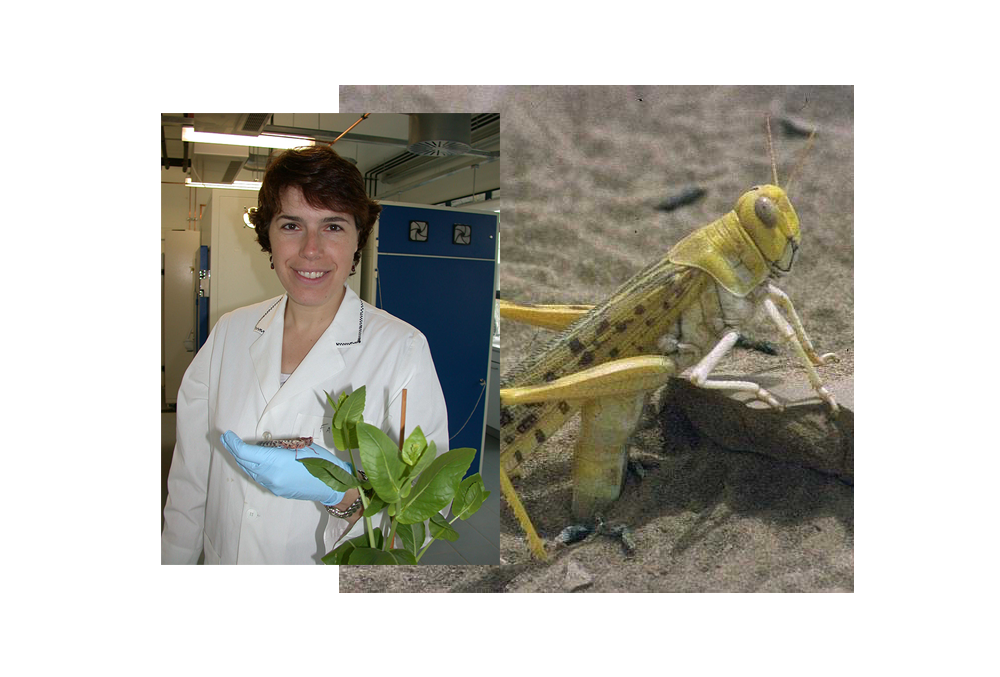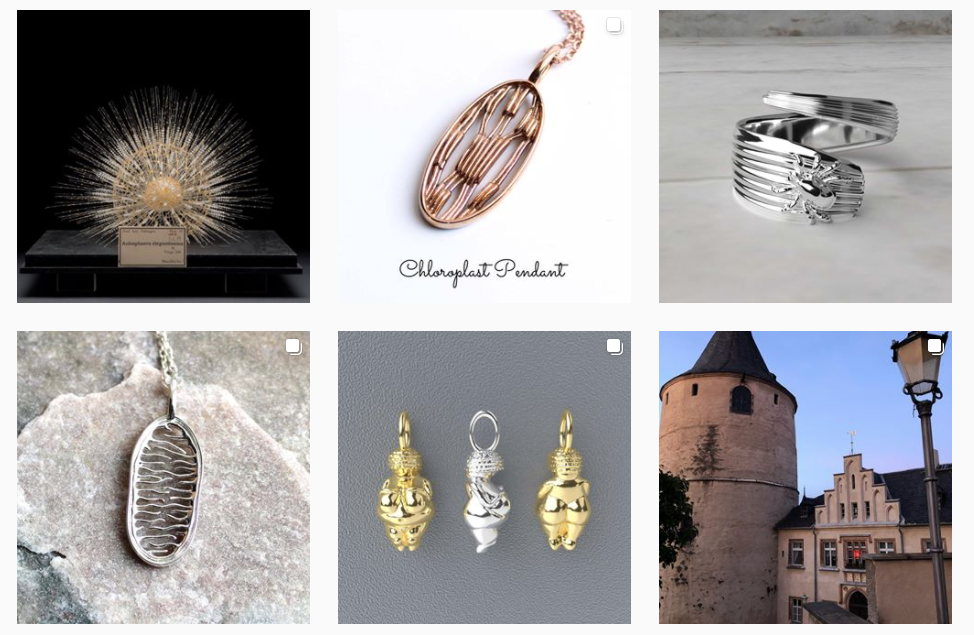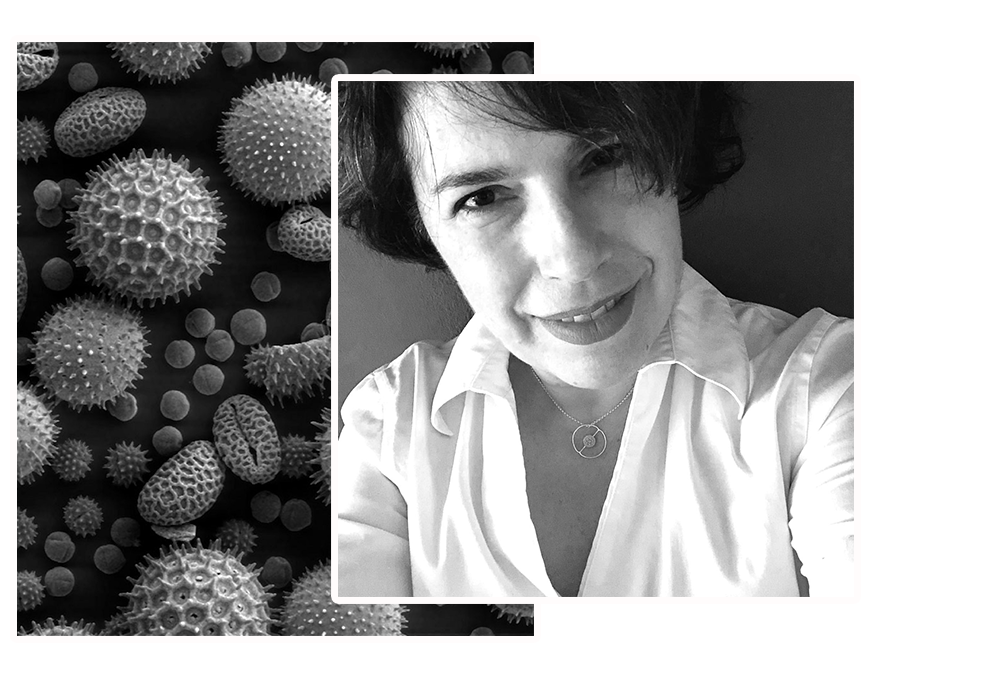I've known Kim Falk for several years. We've never actually met in person but have communicated online in forums and chats. I thought an interview with Kim for the reboot of Three Questions would be the perfect way to begin this series again.
In her own words, Kim is "a former scientist, a nature lover, and a 3D printing design fanatic." The designs Kimberly made that first caught my eye were inspired by the drawings and illustrations of Ernst Haeckel, a contemporary of Charles Darwin. Recreating natural forms within the design constraints of what is possible to produce via 3D Printing is not easy. It takes skill, patience, and to keep at it, a real love for the work. Visit her website, and you'll be mesmerized by her work.

THREE QUESTIONS with KIMBERLY FALK
Jeremy: You’re a former scientist, a nature lover, and a 3D printing design fanatic. Love of nature seems to meld those two interests. How did one lead to the other, and what got you hooked on 3D design?
Kim: Growing up in the Pacific Northwest of the U.S., there were a lot of opportunities for me to experience nature. My family camped, hunted and fished, and although I enjoyed being out in nature with them, I failed miserably at the killing animals part.
I have a clear memory of walking through the forest with my dad when I was about 15 years old, rifle slung across my chest, realizing that if a deer crossed my path that I wouldn’t be the one to take it down. Since then, I’ve sought out nature on my own terms (and I don’t walk in the woods with a rifle).
The thing that always brings me joy is seeing an animal, insect or plant that I’ve never seen before. I’m a zoo junkie, and although I can understand the folks who don’t like seeing animals confined, zoos are doing the heavy lifting when it comes to species conservation. My favorite zoo is in Leipzig, Germany. They have the largest collection of non-human primates in Europe and conduct research in association with the Max Planck Institute of Evolutionary Anthropology. They’ve slowly renovated the depressingingly small Soviet-era cages to expansive landscapes where the animals seem content.

Left: Image Kim Falk. Right: Wikipedia
My interest in science goes hand in hand with my interest in nature. I was a little science nerd at a young age. When I was in first grade, the Apollo 11 mission landed on the moon and it was all my teacher talked about for days. I internalized the message that smart people did science and that science was an amazing thing to do. Eventually, I finished my Ph.D. and started post- doctoral research at the Max Planck Institute for Chemical Ecology. I was working there until about 10 years ago when a constellation of personal stuff, mainly the need to be more flexible for my kids, led me to quit and follow my creative muse.
I taught myself Blender so that I could make scientific graphics and animations for the plant and insect scientific community. That was going well until I realized that my modeling skills could be adapted to 3D printing to make precious metal jewelry. When I got those first prints from Shapeways, I was obsessed. It’s still an absolute high every time I get a box from Shapeways containing a new model. I’m waiting on a steel stink bug (Pentatomid) model at the moment and I’m very excited to see it.
Jeremy: You’re originally from Spokane, Washington, but now live in Jena, Germany. Is Germany now “home,” and if so, what was the thing (if you can put a finger on it) that made you realize that?
Kim: Germany is home, but it’s taken a long time for me to get to that point. It helps that everything in the U.S. is a mess at the moment. My daughters are European through and through, despite their U.S. passports. Neither one of them has any intention of moving to the U.S. although there’s no assurance that they won’t end up in New Zealand or Thailand or some other far-flung place. I would like to be within a one day train trip of wherever they are, but their lives are their own. Jonathan, my husband, sometimes waxes poetic about retiring in the U.S. so he can be closer to his culture as he ages but I remind him that the U.S. is not the same as when we left 22 years ago. Then I cook him Mexican food (it goes well with German beer, by the way) and he’s good.
My main criticism of my adopted home, however, is that Germans don’t realize how good they have it. Their go-to response for everything is no. No, that can’t be done. No, we don’t do it that way. No, it’s not possible. It’s exhausting. They have a higher quality of life than most of the world and yet they still find discontent. I guess humans everywhere just need drama in their lives, whether it’s warranted or not. All this no-ing, however, provides an opportunity for someone who doesn’t see the world like that. If you can ride out their disapproval, you can do great things.
Jeremy: In addition to designing, you are also head of marketing, customer service, and IT for your website (https://ontogenie.com/). What’s your favorite aspect of running a business? And least favorite? What do you think could be improved?

Kim: Oh, business, such a steep learning curve! There’s so much about running a business that you can’t learn until you’re knee-deep in the muck.
Hands down, my favorite aspect is getting to know my customers, hearing their stories and finding out why they’re purchasing a particular piece. When you make things that are as weird and unusual as I do, the customers are just as fascinating. I love hearing their suggestions for new designs, because a lot of times it’s some creature or fossil I’ve never heard of before and I learn something.
My least favorite aspect of the business? Taxes.
If you have a regular job, taxes are fairly streamlined. If you have a business, it’s so much more complicated and I would never attempt it in Germany without an accountant. There are just too many ways to screw up badly. As for marketing, photography, website maintenance, shipping, etc., I get that stuff done, but I’m pretty mediocre at it. My social media marketing has no consistent, overarching style like all marketing gurus tell you you’re supposed to have. It’s important to me to try to involve my followers in the process by showing them works in progress and sharing my inspiration instead of just pushing the finished product. That makes my Instagram and Facebook feeds a little messy, but I’m okay with that. My social media presence has taken a hit since the pandemic. I haven’t been posting consistently, but I definitely need to get back into it.
Learn more about Kimberly and see her work at Ontogenie.
See her (messy) instagram at @ontogenie
